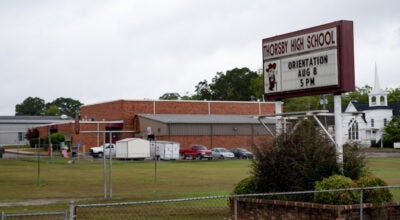Proration goes up 2 percent more
Published 7:22 pm Friday, July 24, 2009
A 2-percent increase in education proration could cost Chilton County public schools around $1 million.
Gov. Bob Riley announced Friday that the level of proration in the Education Trust Fund must be increased to 11 percent for the 2009 fiscal year, which ends Sept. 30. The reason given for the increase is the decline of state tax revenues earmarked for education.
Chilton County Superintendent of Education Keith Moore said the board would continue to use its monthly operating reserves.
“That’s the only thing we can do,” Moore said Friday. “We are not to the point of borrowing money yet, but if proration continues to go up we won’t have any choice.”
Proration is defined as the process of cutting appropriations when revenues fall short of projections.
Tax collections earmarked for the Education Trust Fund have dropped 10 percent since December, when Riley declared proration and released $221 million from the education Rainy Day Fund to lessen proration’s impact to 9 percent.
Earlier this month, the governor released an additional $100 million from the Rainy Day Fund and on Friday released the remaining $116 million in the fund.
“Two percent could affect us probably close to a million dollars,” estimated Steve Yeargan, chief financial officer of Chilton County Schools.
Without final figures, Yeargan projected the system’s reserves would end at about $3 million for the fiscal year.
But proration could bring that down to $2 million, less than half of the state-mandated amount, which is supposed to be equal to a month’s operating expenses.
But Chilton County is not alone. About two thirds of the state’s systems could be in the same boat.
“That’s just an estimation on my part,” Yeargan said.
Neither is Alabama alone in its budget problems. According to a June report from the National Governors Association and the National Association of State Budget Officers, 42 states were forced to reduce enacted budgets in fiscal year 2009 by $31.6 billion.
With 11-percent proration and release of the Rainy Day Funds, education spending by the state is $5.7 billion.
To put that in context, education spending by the state was $4.2 billion in 2003 and reached a record high of $6.7 billion in 2008.
As the recession continues, tax revenues will likely remain lower than expected during the first quarter of fiscal year 2010. Riley and some state legislators have hinted at the possibility of more proration in the coming fiscal year.
But Riley on Friday urged lawmakers to keep school initiatives such as the Alabama Reading Initiative, the Alabama Math, Science and Technology Initiative, ACCESS Distance Learning, and the First Class Pre-K program a priority.
“We have made great progress in education during the past few years,” Riley said. “While economic reality compels us to reduce spending now, Alabama must not abandon our commitment to these nationally renowned initiatives that have improved our schools and helped our children.”
The governor said instead of cutting school programs, legislators must take a serious look at controlling education workers’ health care and pension costs.
“These costs are spiraling out of control,” Riley said. “Their growth is unsustainable.”
Costs of the health and retirement benefits for education workers have skyrocketed.
In 2009, health insurance costs for education workers were more than $1.135 billion — an increase of 72 percent since 2003 when the state paid $660 million.
Retirement benefit costs for education employees have also increased from $977 million in 2003 to more than $1.6 billion in 2009 — an increase of 65 percent.






